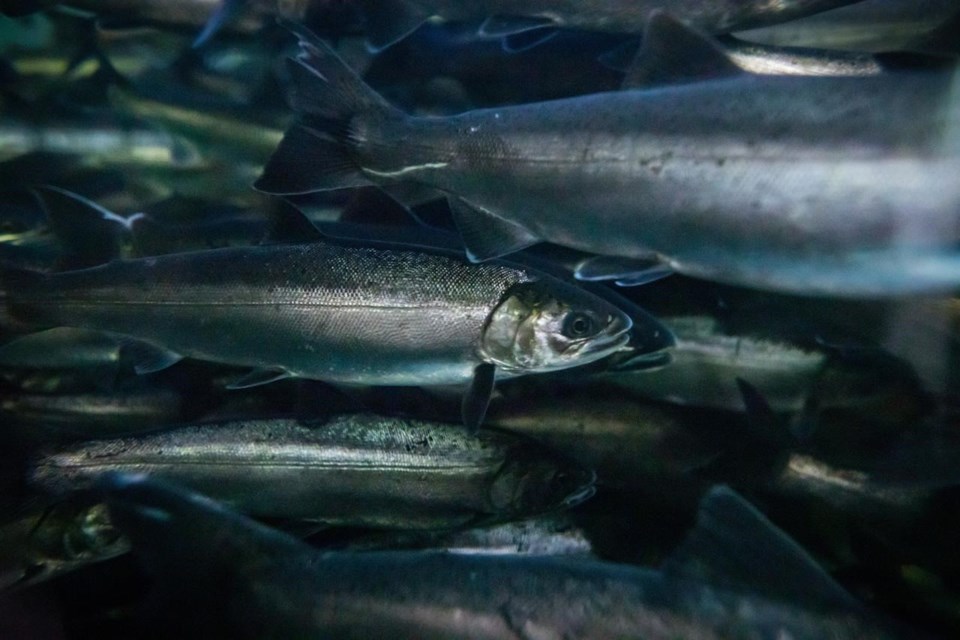British Columbia-based conservation groups have written to the federal environment minister requesting a review of a chemical used in tire rubber, which experts say has been linked to the "mass deaths" of coho salmon.
Peter Ross, senior scientist at Raincoast Conservation Foundation, said the mystery of coho dying in urban waterways had persisted for years, until a 2020 study uncovered the role of a chemical used to prevent tires from degrading.
"For 20 years, our colleagues were sleuthing," he said.
"They were looking at all the potential culprits, including copper, hydrocarbons, parasites, salts from roads, and trying to figure out whether any of these known concerns from previous evidence might be explaining what was going on."
Eventually, the researchers figured out that a "previously undocumented chemical" was responsible, said Ross, director of healthy waters at Raincoast.
The study published in Science, a top academic journal, found a chemical known as 6PPD produces a breakdown substance that's lethal for coho in particular.
The analysis showed toxic concentrations of 6PPD-quinone after rain in Seattle-region watersheds, suggesting it has been flowing off roads and into streams.
The compound is an "oxidation product" of 6PPD, which the study describes as a "ubiquitous" chemical that's used to prevent damage to tire rubber from ozone.
The substance is responsible for previously unexplained coho deaths spanning decades in Seattle-area watersheds, the researchers concluded.
The study says 40 to 90 per cent of returning salmon may die before spawning in urbanized watersheds that have extensive pavement and other "impervious surfaces."
The breakthrough is a "remarkable scientific story," Ross adds.
"It's very, very difficult to establish cause-and-effect relationships between any single pollutant and the health … of salmon, because we are exposing salmon to thousands upon thousands of different chemicals and pollutants in their lifetime."
Raincoast, the Watershed Watch Salmon Society and Pacific Salmon Foundation have together written to Environment Minister Steven Guilbeault requesting an assessment of 6PPD under the Canadian Environmental Protection Act.
The letter sent by Ecojustice lawyers this week says Environment Canada and Health Canada evaluated 6PPD in 2018, finding it posed a "moderate hazard with high exposure," but the screening did not account for the breakdown of the product.
It's that breakdown substance, 6PPD-quinone, which a growing body of research is linking to coho deaths as the fish return from the ocean to spawn, Ross said.
It can lead to a "very dramatic end-of-life experience" for the fish, he said.
"Fish would appear in urban streams, they would look confused, they might be swimming erratically, upside down, and eventually dying."
It's particularly troubling because the fish are dying before they have a chance to spawn, amounting to a "complete loss of reproductive success," said Ross.
The chemical is one item on a "long list of threats" to wild salmon, he added.
Ottawa has attributed population declines in recent years to "climate change, habitat loss and fishing pressures."
Representatives for Environment Canada and Guilbeault's office did not respond to an email on Tuesday requesting a comment on the conservation groups' letter.
The 2020 study has prompted a flurry of ongoing investigation into 6PPD-quinone in Canada, including in Saskatoon, where the letter says the chemical has been detected in 57 per cent of stormwater and 80 per cent of snowmelt.
Ross said the extent to which 6PPD-quinone is affecting salmon in B.C. isn't yet known, but the chemical could explain "anecdotal reports" of coho mortality events recorded mostly by citizen scientists and conservation groups over the years.
Last fall, members of the West Vancouver Streamkeeper Society reported dozens of pre-spawn coho dead in a creek. John Barker, a longtime volunteer, said they sent samples of the dead fish to Fisheries and Oceans Canada for analysis and staff told him there was a "strong possibility" that 6PPD-quinone played a role.
Tanya Brown, a research scientist for the fisheries department at the Pacific Science Enterprise Centre in West Vancouver, previously told The Canadian Press that her team had been monitoring 70 creeks across Metro Vancouver, and they were finding 6PPD-quinone in lethal concentrations during rain events.
Ross said scientists were monitoring for 6PPD-quinone in waterways throughout B.C.'s Lower Mainland and southern Vancouver Island, aiming to illustrate how "pulses" of the substance appear during rainfall events.
But he said Canada was racing to catch up on an issue that authorities "should have been on top of."
"We didn't have our radar on, and our salmon have been suffering as a result."
This report by The Canadian Press was first published Feb. 7, 2024.
Brenna Owen, The Canadian Press



